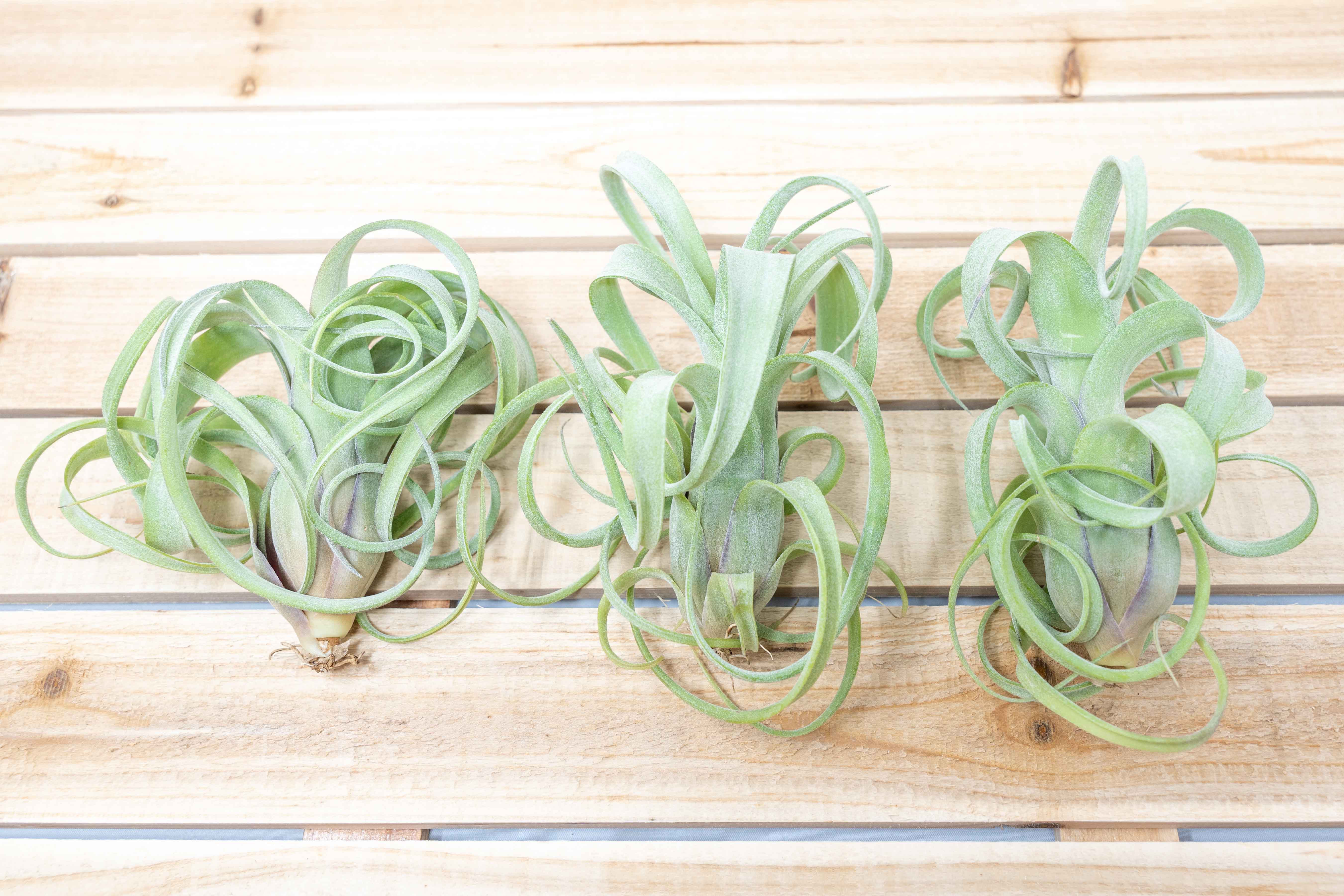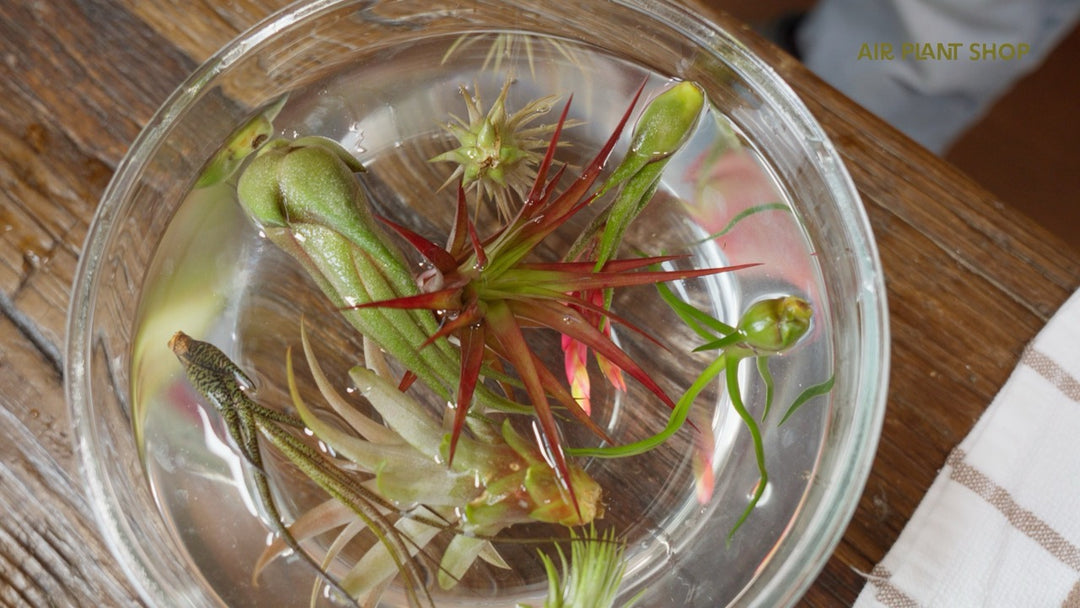
How To Water Your Air Plants
When it comes to air plant care, the three main factors we emphasize are sufficient light, air circulation, and of course, adequate watering. Tillandsia (air plants) are forgiving and adaptable species but will require frequent hydration to survive and flourish. While the requirements for each plant will be dependent on the species and its environment, here we discuss general watering instructions and techniques to ensure your tillys are achieving their hyrdration needs!
Soak Your Plants Weekly

Air plants absorb all of their water and nutrients through their leaves. A thorough 20 to 60-minute soak in room-temperature water every week to ten days is the best way for the plants to fully hydrate. Always remove your air plants from their vessels or displays before watering. Simply fill a bowl with water and let the plants float, rotating and flipping them as needed to allow the entire plant to be fully saturated. You may notice the color of your plants' leaves darken or even bring out the blushing hues when they are wet, this is completely normal! Nutrient-rich water sources that your air plants will love are well water, pond water, creek water, or rainwater but clean tap water or bottled spring water are other great options. Heavily chlorinated tap water can be left out for a day before watering to allow the chemicals to dissipate. Artificially softened water contains added salts which can harm the plants. Avoid using distilled water which lacks the nutrients the air plants need for survival. If you are concerned about your water lacking vital nutrients, give your plants a boost by incorporating Air Plant Fertilizer each month!
Properly Dry Your Plants to Avoid Rot

After a good soak, it is important that your air plants dry in a timely manner to avoid complications down the road. While overwatering is a common concern regarding root rot, this issue is more likely to occur when the plant lacks the ventilation needed to completely dry within a few hours after watering. Once you remove your Tillandsia from the water, gently shake any excess water from the plant and place it upside down or on its side on a rack or dish towel to allow it to dry. Bulbous species, like Xerographica, tend to retain water in their bases so take extra care to make sure any excess water in their cupped leaves has properly drained. You can use a fan to accelerate the drying process but simply placing the plants in an open, well-ventilated area will do the trick. Air plants thrive in bright, indirect light so allowing them to dry in a bright location with filtered sunlight is ideal. Never place the plants in hot, direct sunlight. After one to two hours, your plants should feel dry and their normal color will return, often showing off their white, fuzzy trichomes. Once fully dry, you can place the plants back into their displays and admire their beauty per usual.
How to Water Mounted Plants and Other Considerations for Watering Air Plants

If you have a display that does not allow for the removal of the air plants for a weekly soak, try spraying, misting, or rinsing the air plants as applicable two to three times a week. If possible, gently shake excess water or rotate the display to allow for drainage. Be sure to fully wet the leaves while taking caution to not allow the water to pool at the base.
Air plants in a dry or warm environment may need supplemental misting one to two times a week between soaks or as needed to maintain hydration. Try our glass and gold-dipped Air Plant Mister as seen in the photo on the right! Typically, when a plant is thirsty, the leaves will curl or roll inward. This is an indicator that the plant may need more frequent or thorough watering. Different climates and seasons will call for different watering routines. Depending on your location, watering needs during the winter and summer months may vary. If your plants are near a heating source during colder months, you might need to mist them in between watering. In the summer months, your air plants may need more water due to the heat and more light.








So glad you are offering these videos/instructions. It can get confusing especially when different air plant places say different care. Really appreciate it, thanks :)
Thank you so much for your videos on soaking your plants. My friend and I were arguing about the ways of doing it and you clarified! Thank you
Thanks for the added videos. Having a large variety. It’s nice to see the different watering routines.
Leave a comment